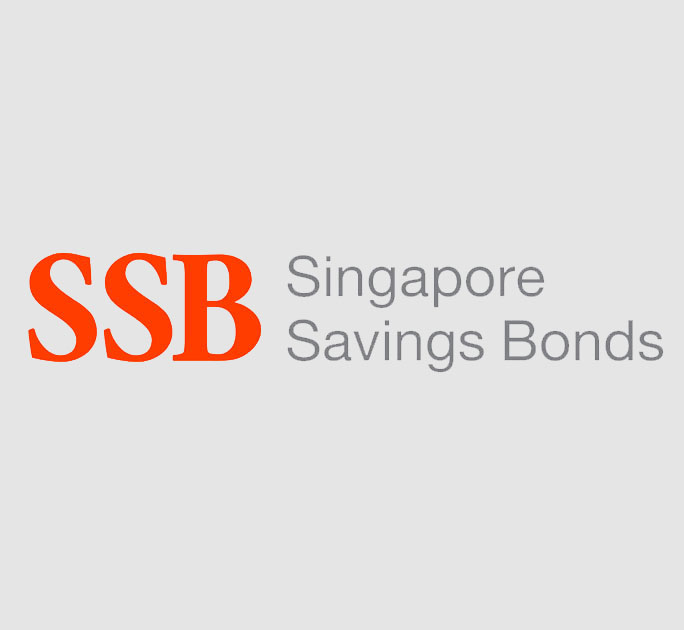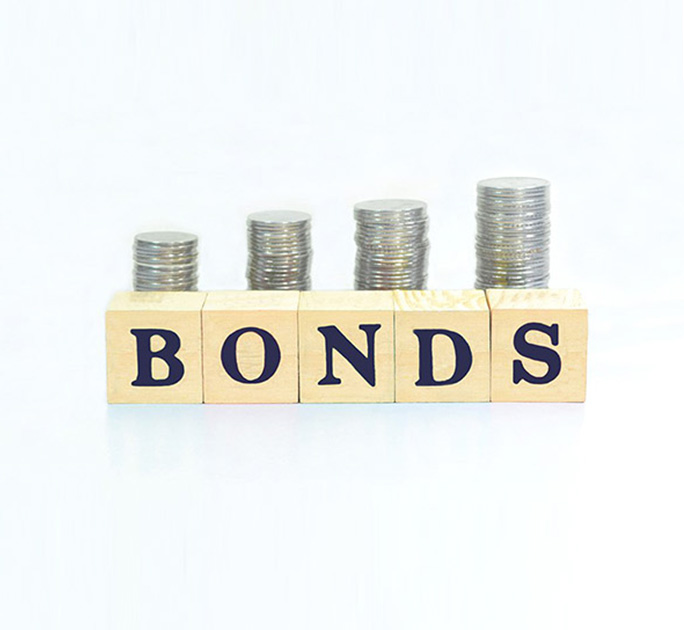Investing in SGS Bonds
By Gwendoline Tan
![]()
If you’ve only got a minute:
- SGS Bonds are government-backed debt securities that pay a fixed interest every 6 months, with terms ranging from 2 to 50 years.
- These bonds are issued to help develop the local debt market and finance long-term, large-scale infrastructure projects.
- You can invest in SGS Bonds using cash, SRS, or CPF monies, with a minimum investment amount of just S$1,000.
![]()
In times of economic uncertainty, many investors seek safe, stable investment options, and Singapore Government Securities (SGS) are one such option.
Known for their low risk and predictable returns, SGS Bonds are appealing for long-term goals like retirement planning and capital preservation, especially if you have a lower risk tolerance. With their long tenures and stable returns, these bonds can also play an important role in a balanced investment strategy, offering a reliable income stream for those looking to secure their financial future.
So, what exactly are SGS Bonds, and how can they fit into your investment strategy?
Read more: Investing in SGSs other than SSBs
What are SGS Bonds?
SGS Bonds were first introduced by the Singapore government more than 20 years ago to raise funds as part of a broader strategy to develop the country as an international debt hub.
The funds raised from the issuance of SGS Bonds are regulated and invested in accordance with the Government Securities Act 1992 and Financial Procedure Act 1966, and they cannot be spent on government expenditure. They were later renamed as SGS (Market Development) Bonds when a newer category, SGS (Infrastructure), was launched in 2021.
SGS (Infrastructure) Bonds are issued under the Significant Infrastructure Government Loan Act 2021 (SINGA). This authorises the Singapore government to borrow up to S$90 billion to fund upcoming infrastructure and expansion projects, with a subcategory for funding green initiatives.
The 3 categories of SGS Bonds are distinguished by the intended use of their proceeds and the legislation under which they are issued.

Read more: A beginner’s guide to bonds
Key features of SGS Bonds
Backed by the Singapore government, SGS Bonds carry a AAA credit rating, making them one of the safest investments available in Singapore.
Here are some key features to consider when investing in SGS Bonds.
Steady stream of long-term income
When you buy SGS Bonds, you are essentially lending money to the government. In return, you receive fixed interest repayments known as coupons. These are paid every 6 months throughout the lifetime of the bond.
SGS Bonds come in varying maturities, from short-tenure issues of 2 and 5 years, and long-tenure ones of 10, 15, 20, 30, and even 50 years. If you buy an SGS Bond at issuance and hold it to maturity, you can expect to receive the full principal amount of your investment.
As coupon rates are fixed upon issuance, SGS bondholders can enjoy a predictable, consistent income stream over several decades.
Low barrier to entry
SGS Bonds are accessible to a wide range of investors, with a minimum investment of just S$1,000 and subsequent increments of S$1,000. In comparison, most corporate bonds require a minimum outlay of S$200,000 or more, which can price out smaller investors.
No upper limit
Unlike Singapore Savings Bonds (SSBs) which have a cap of S$200,000, there is no upper limit on the amount you can invest in SGS Bonds. This flexibility allows you to invest larger sums if your financial goals require it.
The exception to this is if you are buying your SGS bond at auction, in which case there are allotment limits for each auction.
Read more: Investing in SSBs
Liquidity
If you need access to your funds before the bond matures, SGS Bonds can be sold on the secondary market. Keep in mind that the price is dependent on market fluctuations and is likely to differ from what you originally paid.
This can be done through any dealer bank, or on the Singapore Exchange (SGX) via a broker.
Read more: 8 things to know before buying bonds

Methods of issuance
SGS Bonds are issued monthly, either through syndication or auctions, as per the issuance calendar published on the Monetary Authority of Singapore’s (MAS) website.
Syndication
In a syndication, MAS first appoints a group of banks, called bookrunners, to jointly market and distribute the bonds to institutional investors as part of a Placement Tranche. The price and yield are then set through a process known as book-building, where investors indicate how much they’re willing to pay.
Once the price is determined, the bonds are offered to the public as part of the Public Offer. MAS aims to allocate the bonds to as many individual investors as possible.
Syndications are not done regularly but are used when needed to respond to market conditions.
Uniform price auction
Alternatively, SGS Bonds may be issued via a uniform-price auction where investors can submit competitive or non-competitive bids.
Non-competitive bids are suitable if you are flexible about the yield. All you need to do is specify the amount you wish to invest. These bids are given priority during allocation, for up to 40% of the total issuance amount. If the total non-competitive bids exceed 40%, they will be allocated on a pro-rated basis.
If successful, you will receive the bond at the cut-off yield. This is the highest accepted yield from the competitive bids.
On the other hand, competitive bids allow you to specify the yield you are willing to accept. If the cut-off yield is lower than your bid, you will not receive any bonds. The remaining bonds are allocated to the successful competitive bids, starting from the lowest yield to the highest.
The more competitive your bid, meaning the lower your specified yield, the higher your chances of securing the bond. You can also submit multiple competitive bids at different yield levels.
SGS Bonds in your portfolio
When building your portfolio, consider your investment goals, risk tolerance and time horizon.
SGS Bonds provide a stable income stream, making them an ideal option for long-term goals like retirement or capital preservation.
The amount you allocate to SGS Bonds will depend on your risk tolerance. Conservative investors may allocate more, while those with a higher risk appetite could use SGS Bonds for stability while pursing growth with riskier assets.
A diversified portfolio with both growth and income assets helps you balance risk and reward. While SGS Bonds are backed by the government, diversification within your bond holdings remains key, especially in market volatility.
This can be achieved through robo-advisors like DBS digiPortfolio or pooled investment products which provide access to a range of bonds at lower entry points and offer more liquidity.
Read more: What is the Barbell Strategy?
Find out more about: digiPortfolio

Returns
When evaluating returns on SGS Bonds, you should consider both the coupon rate and the yield.
The coupon rate represents the fixed dollar amount you will receive, which is useful for those seeking a regular income stream.
For example, the Green SGS Bond issued in April 2025 offers a coupon rate of 3.25% per annum (p.a.). If you invest S$10,000, you will receive S$325 annually, split into 2 payments of S$162.50 each, paid on 1st December and 1st June until the bond matures in 30 years’ time.
The yield, on the other hand, reflects your actual return and fluctuates based on the bond’s purchase price and current market conditions. Bond prices and yields have an inverse relationship. If you buy a bond at a price different from its original face value, the yield will adjust accordingly.
Using the same perimeters in the example above, if you buy a bond with a 3.25% p.a. coupon rate (S$325 per year) for S$9,500 instead of its face value of S$10,000, your yield would be 3.42% instead of 3.25%. This is calculated by diving the coupon amount you receive by the price you paid for the bond.
Based on the closing levels of SGS bond yield curves as of 23 April 2025, yields for long-tenure SGS Bonds currently range between 2.5% and 2.7%.

Risks
While SGS Bonds are considered low-risk investments, they are not without their risks. There are 2 primary risks to consider – interest rate and inflation risk.
Interest rate risk
Interest rate risk occurs when rising interest rates make other investment options more attractive, potentially lowering the price of your bond if you try to sell it before maturity.
Duration risk is a type of interest rate risk that measures the sensitivity of a bond’s price to interest rate fluctuations. For long-tenure SGS Bonds, this risk is higher because their longer maturity means interest rate changes affect their price more significantly.
If interest rates rise, the price of long-term bonds may drop more than short-term bonds. However, if you hold the bond to maturity, you will continue to receive your fixed coupon payments and the principal at maturity, which reduces this risk.
Conversely, when interest rates fall, the value of your bond may rise since its fixed interest rate becomes more attractive relative to newly issued bonds in the lower interest rate environment.
Inflation risk
Inflation can reduce the purchasing power of the money you earn from your bond. If inflation rises higher than the bond's yield, the real return becomes negative. For example, if your bond pays a coupon of 3% p.a. but the prevailing inflation is 4%, your real return is roughly -1%. Inflation expectations are crucial when evaluating long-tenure bond investments because your money is locked in for an extended period at a fixed interest rate.
How to buy SGS Bonds
There are several ways to purchase SGS Bonds.

At the point of application, ensure you have enough funds in your account. For new issues, the full bid amount will be debited at the point of application. For reopened bonds where the final price is only known after the auction, 115% of your bid amount will be deducted upfront. Any difference from the final price will be refunded to you after the auction.
If your bid is unsuccessful, the money will be refunded to your account within 1 to 2 business days after the auction.
Applying through DBS
DBS applications close online at 9pm, 1 business day before the auction.
Application fees are waived for cash, SRS and CPF-SA applications. For CPF-OA, there is a S$2.50 + GST fee for both purchase and maturity, and an additional S$2.00 + GST per counter per quarter.

Find out more about: Applying for SGS Bonds
In summary
SGS Bonds can be a valuable addition to your investment portfolio, offering a way to balance risk while providing additional income streams. Their long tenure makes them especially suitable for long-term goals, giving you peace of mind with predictable returns.
By understanding the features, potential risks, and methods of purchasing SGS Bonds, you can make more informed decisions that align with y our financial goals. However, it's important to remember that diversification is key. While SGS Bonds offer stability, incorporating a variety of asset classes into your portfolio can help protect against inflation and other financial risks such as inflation and longevity.
Ready to start?
Need help selecting an investment? Try ‘Make Your Money Work Harder’ on digibank to receive specific investment picks based on your objectives, risk profile and preferences.
Invest with DBS Invest with POSB
Speak to the Wealth Planning Manager today for a financial health check and how you can better plan your finances.
Sources:
The Straits Times, “Parliament passes law on borrowing to fund national infrastructure”, retrieved 24 Apr 2025.
The Straits Times, “ST climate change webinar: S'pore to employ mix of coastal protection measures as sea levels rise, say experts”, retrieved 24 Apr 2025.
Ministry of Finance, “Green Bonds”, retrieved 24 Apr 2025.
Monetary Authority of Singapore, “Understanding Singapore’s Bond Market”, retrieved 24 Apr 2025.
Monetary Authority of Singapore, “Auction: NA24300E 30-Year Bond (Reopened)”, retrieved 24 Apr 2025.
Monetary Authority of Singapore, “Bond statistics”, retrieved 24 Apr 2025.
Monetary Authority of Singapore, “SGS Bonds: Information for Individuals”, retrieved 24 Apr 2025.
Disclaimers and Important Notice
This article is meant for information only and should not be relied upon as financial advice. Before making any decision to buy, sell or hold any investment or insurance product, you should seek advice from a financial adviser regarding its suitability.
All investments come with risks and you can lose money on your investment. Invest only if you understand and can monitor your investment. Diversify your investments and avoid investing a large portion of your money in a single product issuer.
Disclaimer for Investment and Life Insurance Products








That's great to hear. Anything you'd like to add? (Optional)
We’re sorry to hear that. How can we do better? (Optional)